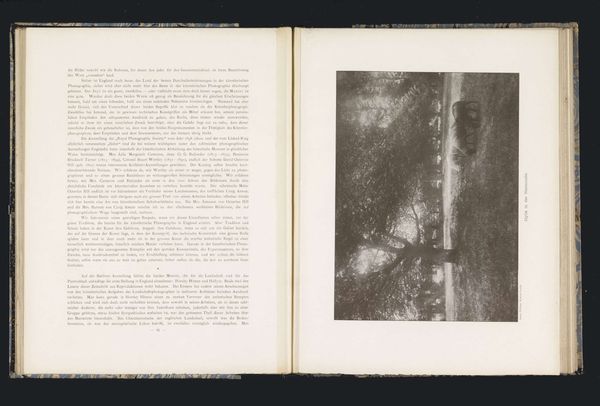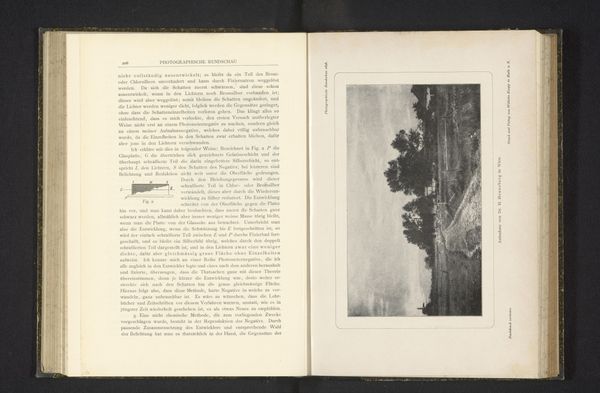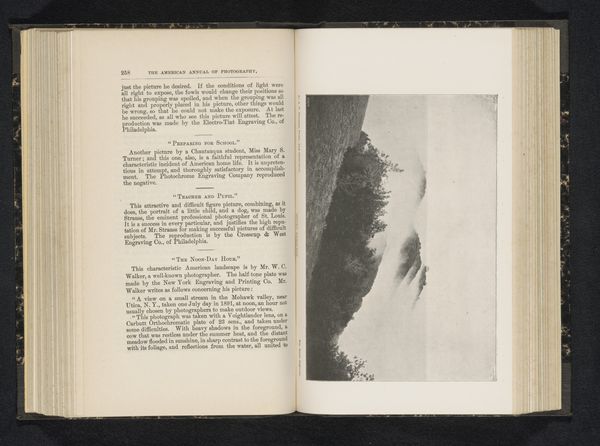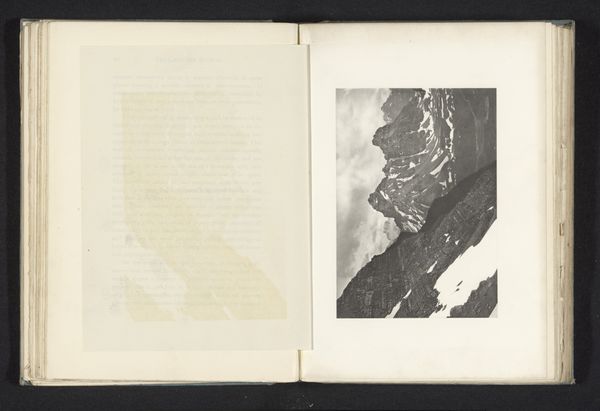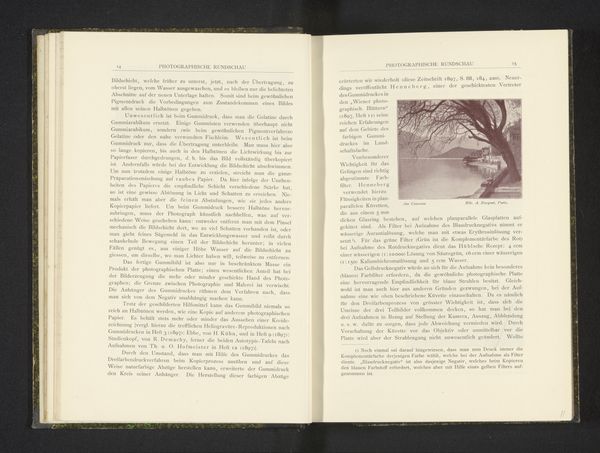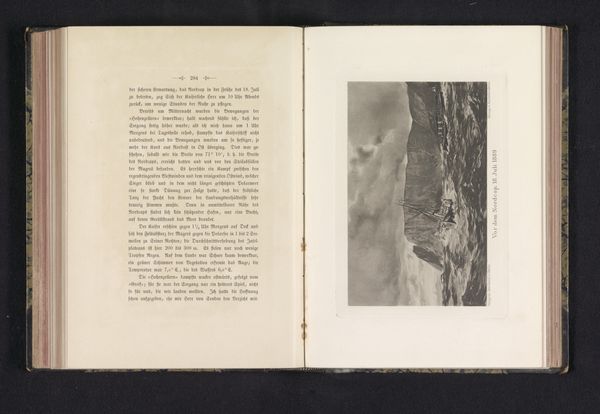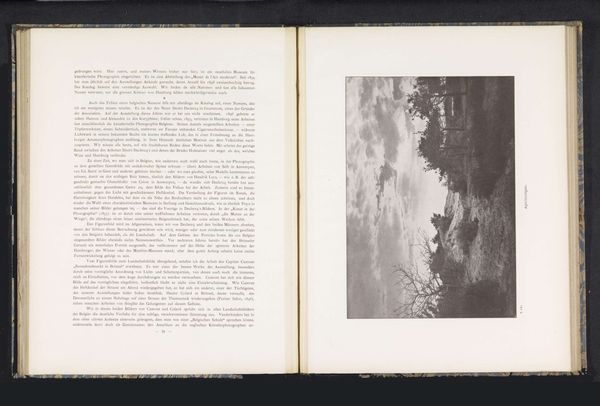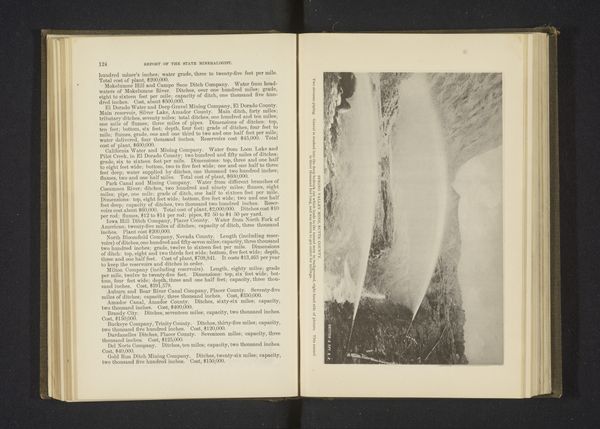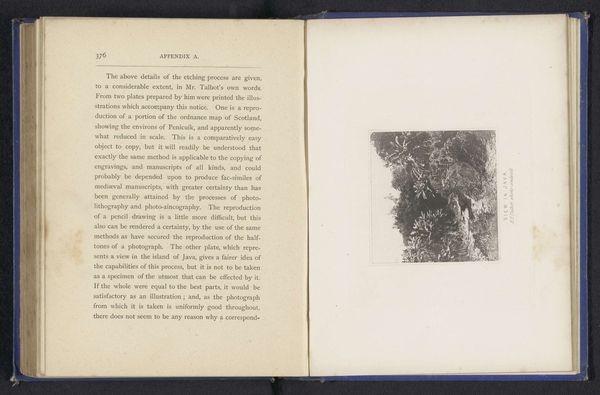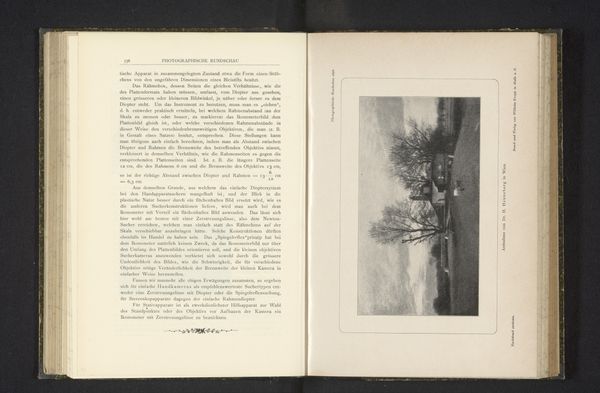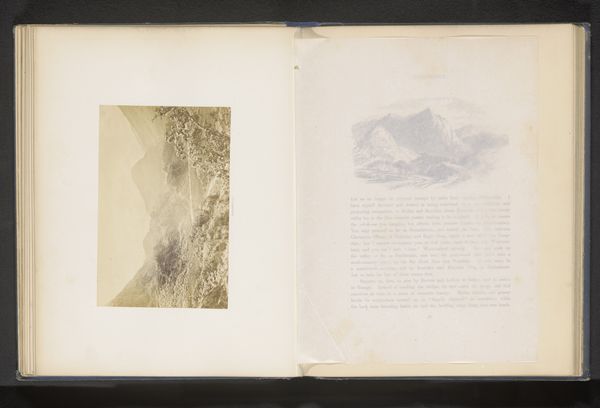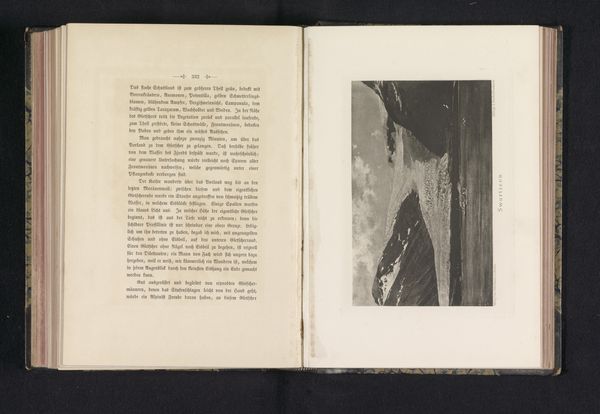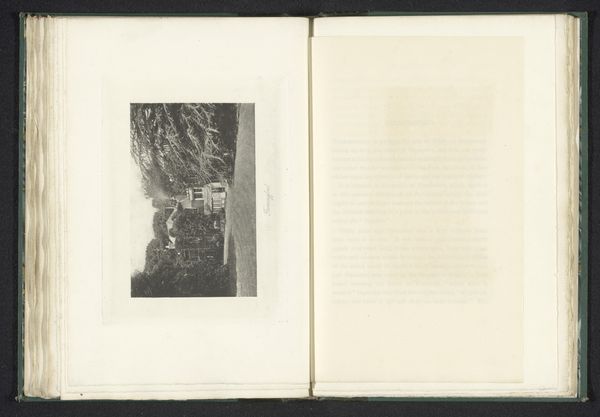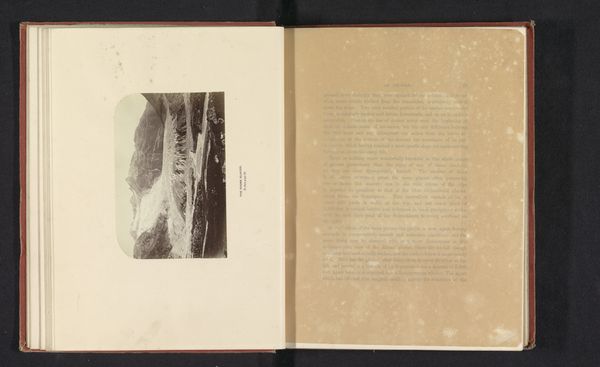
Dimensions: height 111 mm, width 150 mm
Copyright: Rijks Museum: Open Domain
Curator: Here we have "Bretons Landschap" by Constant Puyo, a gelatin silver print dating from before 1896. What's your initial read? Editor: It strikes me as quietly unsettling, a bit surreal. The almost monochrome tonality and skewed verticality lends it a melancholic weight. The sky almost appears more weighted, visually, than the land. Curator: Yes, the photographic print manipulates the usual landscape format, rotating the traditional horizon into a vertical axis, disrupting our sense of space and depth. How do you interpret that effect? Editor: I think that disrupts the historically coded view of landscapes— especially idyllic images— as places of refuge, far from industrial anxieties. The tilting challenges that escapism; it feels precarious, even anxious. The landscape appears almost as if falling over. Curator: Formally, this emphasizes the abstract qualities inherent in photography: light and shadow, texture and tone, and their interplay to create atmosphere. Puyo masterfully used photographic techniques to echo the subjective vision prominent in impressionistic painting. Editor: Precisely! Photography, emerging alongside major social shifts, documented but also shaped perceptions. The choice of subject and treatment reveals a desire for aesthetic sensitivity within an evolving, and often quite gritty, modernity. In this regard, it's useful to consider Puyo's political inclinations—as a soldier. Curator: Interesting perspective, however I see Puyo creating here an image less documentary or politically anchored, and more an arrangement of purely aesthetic qualities; see the tonal balance, and controlled gradations... Editor: Perhaps, but can we really separate aesthetics from ideology? How an image represents landscape speaks volumes about its time. This particular work speaks of beauty tinged with precarity. Curator: Well, I must say, it does leave much to reflect upon. Editor: Absolutely; "Bretons Landschap" invites us to consider not only photographic composition, but the evolving human relationship to place itself.
Comments
No comments
Be the first to comment and join the conversation on the ultimate creative platform.
